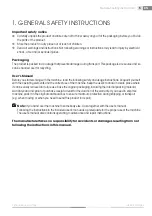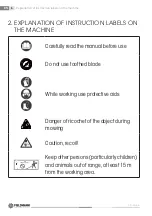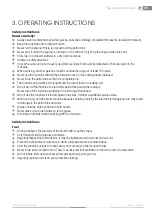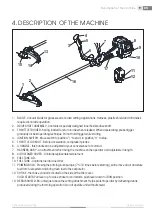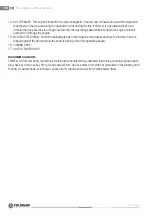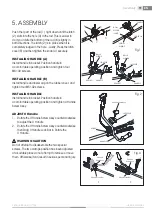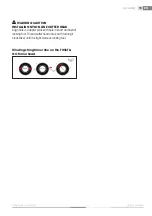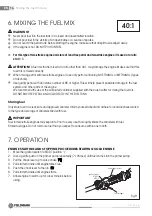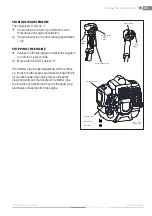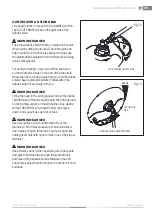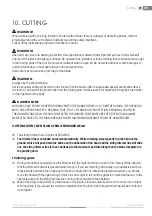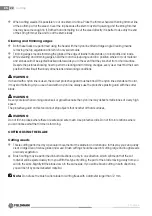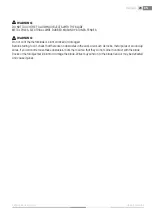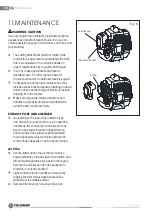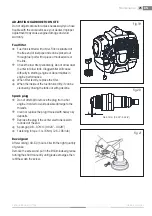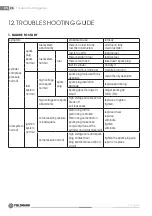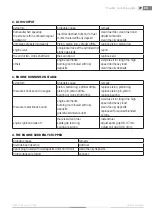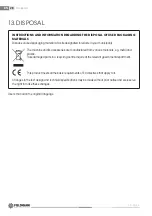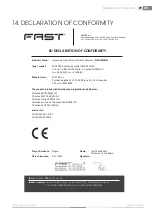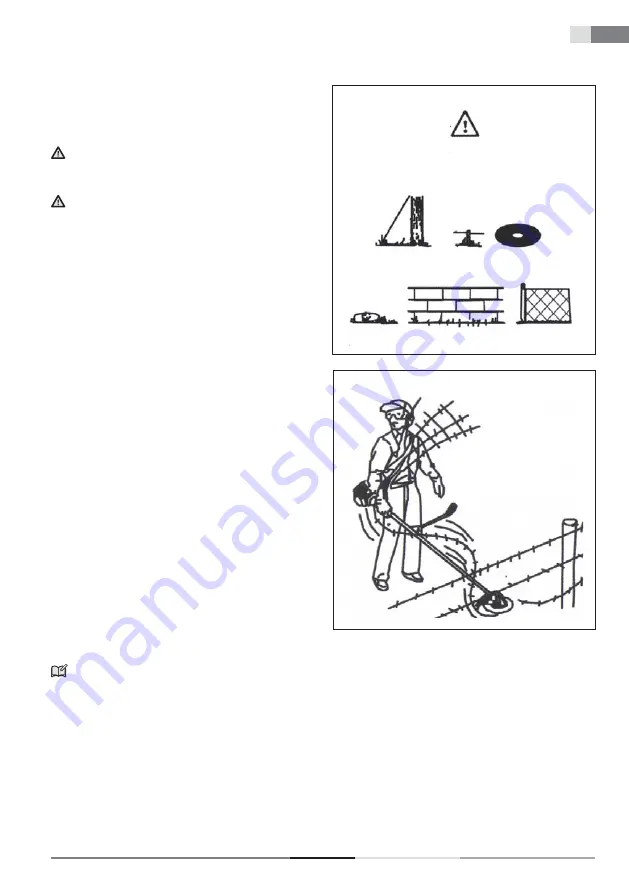
EN
PETROL BRUSH CUTTER
USER'S MANUAL
19
Safety working with brush cutter
BRUSH BLADE is used for cutting brush and weeds up
to 3/4” in diameter. Only 255mm 3-blade can be used
in this type of brush cutter.
WARNING DANGER
DO NOT USE A BRUSH CUTTER FOR CUTTING TREES.
WARNING DANGER
Do not cut with dull, cracked or damaged metal blade.
Before cutting growth, inspect for obstructions such as
boulders, metal stakes or strands of wire from broken
fences. If an obstruction cannot be removed, mark its
location so that you can avoid it with the blade. Rocks
and metal will dull or damage a blade. Wires can
catch on the blade head and fl ap around or be thrown
into the air.
Blade thrust is the reaction which may occur when
the spinning blade contacts anything it cannot cut.
This contact may cause the blade to stop for an instant
,and suddenly ‘thrust” the unit away from the object
that was hit.This reaction can be violent enough to
cause the operator to lose control of the unit. Blade
thrust may occur without warning if the blade snags
, stalls or binds.This is more likely to occur in areas
where it is diffi cult to see the material being cut.For
cutting ease and safely, approach the weeds being cut
from the right to the left,in the event that an unexpected
object or woody stock is encountered,this could
minimise the blade thrust reaction.
SCYTHING WEEDS. This is cutting by swinging the
blade in a level arc. It can quickly clear areas of fi eld
grass and weeds. Scything should not be used to cut
large, tough weeds or woody growths.
NOTE
Do not use a brush blade to cut trees which exceed
a diameter of 1/2 to 3/4 inches.
Fig. 15
Fig. 16
WARNING
DANGER
DO NOT TOUCH THESE TYPES OF OBJECTS
WITH BLADE
METAL STAKES
UTILITY WIRES
RUBBER
MASONRY
ROCK
FENCES

